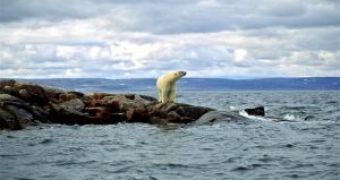Dr. Camille Parmesan, a University of Texas at Austin biologist, has made a meta-analysis of 800 studies on how global warming is affecting species' diversity on Earth.
Global warming is already blamed for extinctions in most sensitive habitats and species (e.g. Golden toad of Costa Rica) and it's going to lead to more extinction in the next 50 to 100 years.
It seems that species are not evolving fast enough to prevent extinction.
"Earlier synthesis was hampered from drawing broad conclusions by the relative lack of studies. Because there are now so many papers on this subject, we can start pulling together some patterns that we weren't able to before." said Parmesan.
"We are seeing stronger responses in species in areas with very cold-adapted species that have had strong warming trends, like Antarctica and the Artic," Parmesan added.
"That's something we expected a few years ago but didn't quite have the data to compare regions."
Previous studies had pointed that species restricted to cold climate habitats like the poles or mountain tops and with narrow temperature tolerances (for example, tropical corals) are the most vulnerable faced with the global warming.
The species with the smallest temperature tolerance range are going extinct and/or relocating their ranges as their original habitat changes, in a continuous trend.
"Some species that are adapted to a wide array of environments-globally common, or what we call weedy or urban species-will be most likely to persist," said Parmesan. "Rare species that live in fragile or extreme habitats are already being affected, and we expect that to continue."
The analysis revealed that even the species with quick generation succession, like insects, frogs, small birds, are not evolving faced to climate change in a rate that could prevent extinction.
"To really come up with something new that's going to allow a species to live in a completely new environment takes a million years. It's not going to happen in a hundred years or even a few hundred years. By then, we might not even think of it as the same species." said Parmesan.
"The good news is that some species already had a few individuals that were good at moving, so some populations are evolving better dispersal abilities. These species are able to move faster and better than we thought they could as climate warms at their northern range boundaries. So, they're expanding into new territories very rapidly."
Pests and pathogens are also showing the same northward relocation like many wild animals.
Within groups of animals and plants, the adaptation power is very variable as some species respond to climate change and others do not.
"Whether it's within fish, trees or butterflies, you're seeing some species responding strongly and some staying fairly stable," said Parmesan.
"But within each group you're still seeing about half of the species showing a response. It's a very widespread phenomenon."

 14 DAY TRIAL //
14 DAY TRIAL //